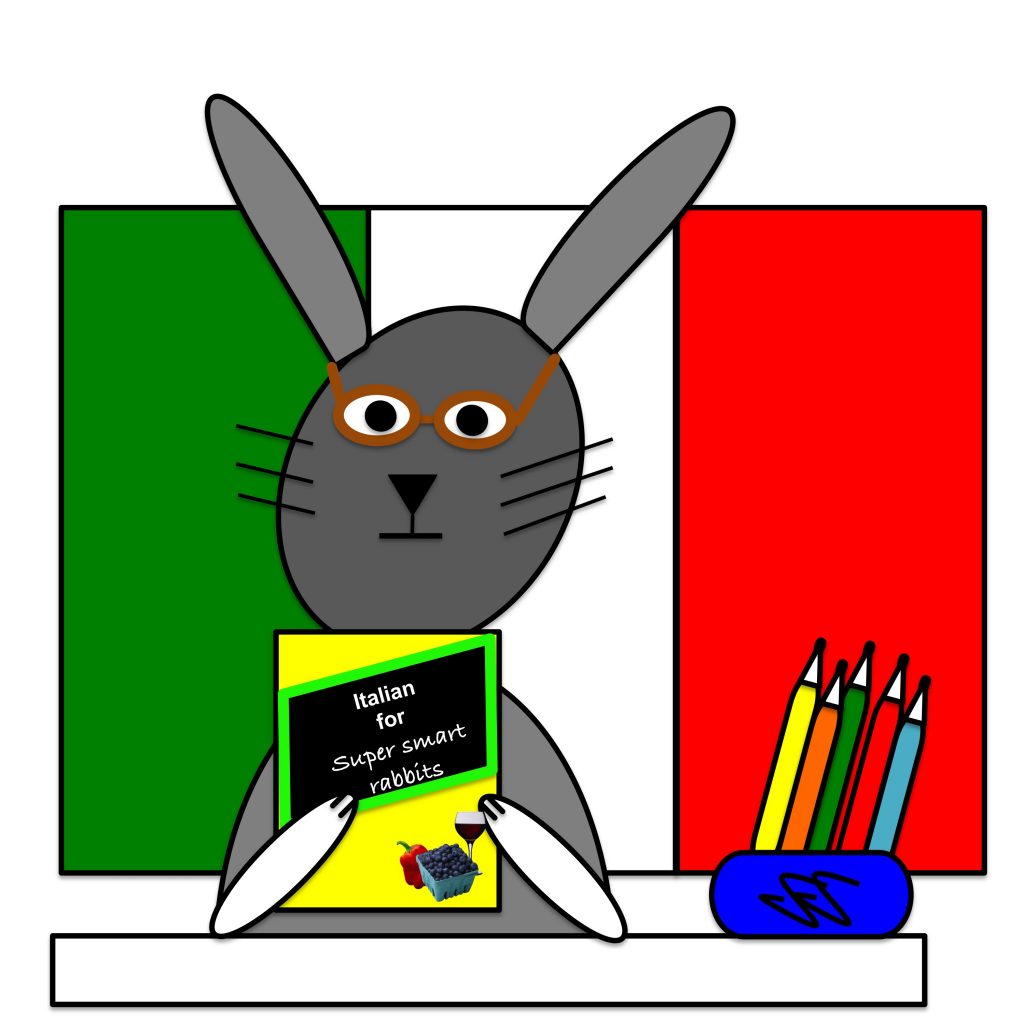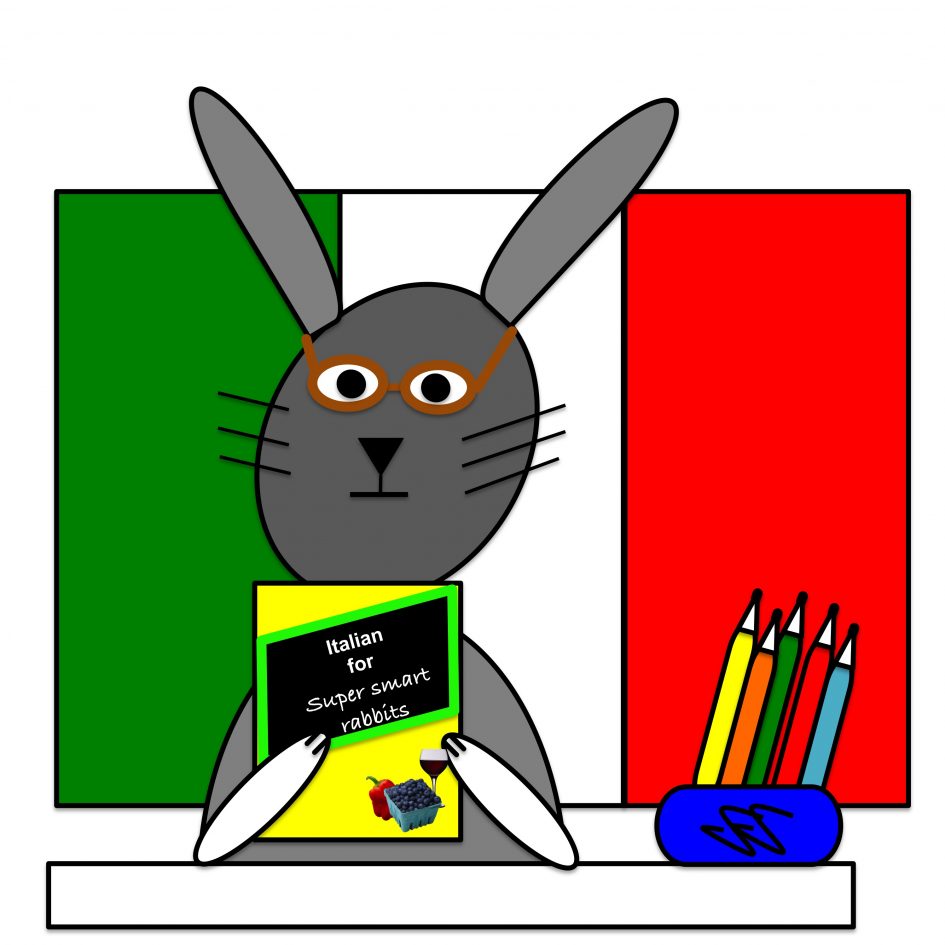
Rafael, the multi-lingual rabbit, studies Italian (illustration © Susannah Straughan 2019)
I don’t own a copy of Italian for Dummies or the ambitiously titled Italian All-in-One For Dummies. If either of these books can fulfil the publisher’s claim of ‘Making Everything Easier’, then it might be time to take the plunge.
In 2017 I wrote about my struggles learning basic Italian, during a six-week crash course at the City Lit in London. In January 2019 I restarted my studies – this time at my local college in Harrow.
Learning basic Italian hasn’t got any easier, but it has certainly been more fun the second time around. The class is larger – 10 or more regular attendees – the atmosphere is more relaxed, and our teacher doesn’t look like a deer caught in the headlights as we plough through Nuovo Espresso 1.
The age range is broad – from Millennials to Baby Boomers – but there’s only one man in our Italian class. Luigi (real name Wayne), didn’t return after the Easter holiday, but we were lucky enough to acquire Jack (Giacomo?) to take his place.
Jack transferred in after the continuation of his Beginners German course was cancelled at the 11th hour. It highlights the need to be adaptable if you want to take up a modern European language at your local college.
If I knew the Italian word for shambolic, I would use it to describe the navigation system on the Harrow College website. The screenshot below should include the words ‘… if I can find my way around this useless website’. Call me a middle-aged dummy, but all I can see when I click on the Courses section are classes in ESOL and EFL. There is no indication that the college plans to offer evening classes in languages this autumn.

Designed to confuse: the Harrow College website
Among the new words I have learned this year are l’asciugacapelli (hairdryer), fruttivendolo (greengrocer) and ciliegie (cherries). Yes, everything does sound 100 per cent better in Italian. My all-time favourite Italian word is la spiaggia (beach), which conjures up memories of sun-kissed holidays on the Adriatic if I say it enough times.
On the down side, why does Italian try to trip me up with the confusingly similar uva (grapes), uovo (single egg) and uova (several eggs)? Don’t even get me started on the frustration of mispronouncing pesche (peaches) and pesce (fish). They’re not a good culinary match either.
I’m sure Rafael (the rabbit in the illustration above) shares my relief that la carota is indeed the Italian word for carrot. He also likes a big bunch of dandelion leaves in his delicious home-made pesto. Not surprisingly, Italian has three words for dandelion. I like il dente di leone.
Many years ago, my friend Michael advised me to ‘read the rubric’ on the exam papers, when we were studying law. In Nuovo Espresso 1 the rubric is is written entirely in Italian and there is no index. Leonardo da Vinci wouldn’t rate the quality of the illustrations.
No doubt it makes sense from a publishing and business perspective to have no English in the book. As a middle-aged student with limited patience, I might opt for Italian for Dummies over the second volume of Nuovo Espresso.




